Day Three brought about a certain dread in me, and I expect at least Chalmers, Pat and Becky as well as several others felt the same way. The wind was still powerful and howling and mostly in our face. In order to combat the wind, we had to paddle continuously and sometimes furiously (and sometimes quite fearfully). As Chalmers and I battled the wind, our collective inexperience in handling the canoe required me to paddle almost exclusively on the left side of the canoe, tiring one set of muscles and sinews quite grievously. I had brought two pairs of gloves, but lost both of them to the river on Day Two, so my hands were becoming raw, eventually blistering. Some of the stronger members exchanged places so as to split up the lesser experienced paddlers.
While the Green flows mostly south/southwest, it also meanders significantly. Thus we had to adjust to substantial changing wind angles with every bend in the river. The original US explorer of the river (as well as the Colorado River through the Grand Canyon) was a man named John Wesley Powell. In his first exploratory journey in 1869, he named one section of the river Bowknot Bend. He noted in his journal that he passed a promontory and nine miles later he passed within 600 feet from where he started. You will not be surprised to learn that Lake Powell is named after the noted explorer.
We survived a grueling Day 3 without anyone capsizing, but we were tired. Days 4, 5, and 6 saw a diminution of the winds each day; sometimes in Days 5 and 6 we were able to lash several canoes together, put on some tunes, and enjoy a beer or two on the river. Since Chalmers and I had lost most of our beer on Day 2, we rationed our beer closely. We later found out that due to the winds, very little beer had been consumed on the river so that by the end of the trip there was a significant surplus.
The first half of the trip the Green flowed through BLM land (no, not Black Lives Matter but rather the Bureau of Land Management). The 2nd half flowed through Canyonlands National Park. Some stringent regulations governed aspects of our activity. For example, we were forbidden to have campfires except in a 16 inch diameter portable metal fire ring. We were also required to pack out our bodily waste, so we rented two cube-shaped metal boxes with a detachable seat for our toilets, which we nicknamed the “Groovers” (so named because an earlier, less comfortable, version of the device left grooves on one’s backside). One of the groovers was for the 11 men and the other was for the 3 women. I know, it seems a little unfair. Towards the end of the trip a few select men were allowed to use the women’s groover. I was not so selected. We drew lots on the onset of the trip for “groover duty.” I drew the slip for “3W,” meaning I had the good fortune of placing and transporting the women’s groover on the 3rd day when it was relatively light. Woe to the person who drew 6M or 7M. I was on pins and needles worrying about our toilet paper supply, as Chalmers and I lost the vast proportion of our stocks into the river on Day Two. However, through conservation and the fact that most people had some private supplies, we found we just had just enough TP to last our 8 days. I was relieved. Regulations also required that all urine was to be deposited in the river and not on dry land. Buckets were placed near the men’s and women’s groovers to collect urine. I did not strictly adhere to this regulation.
Other than the people, perhaps the most appealing aspect of our journey on the river was the spectacular scenery. Each day the rims of the canyon walls grew higher and more dramatic. Moreover, due to the natural forces of erosion (or to God’s whimsy, if you prefer) we could make out recognizable features in the landscape: faces of people, aliens, cartoons and animals, as well as various sundry objects. Very entertaining.
We did not encounter much wildlife other than birds. Herons, hawks, eagles and vultures were plentiful. Smaller birds, other than swallows, not so much, in large part because the tamarisk makes unsuitable habitat. Bats came out in the evening. They were actually pretty cool and did their part in keeping the mosquito population in check. Our last campsite featured the most varied wildlife. There was a large doe, a muley I think, in camp. In the evening, a small flock of wild turkeys alighted in the tree above us, unconcerned with the 14 humans underneath. (We, however, were concerned about being shat upon.) One day I thought I saw a mountain lion, but I remain unsure. Small lizards were plentiful, and annoying mosquitoes and other insects were more so. Ellen’s favorite, the wolf spider, fell out of the trees and into the bottom of the canoes. There were a number of squirrels and other rodents as there seem to be almost everywhere else in the world, if you think about it.
As far as the weather, I have already talked about the wind. I estimate that of the 123 miles on the river, we faced a headwind during around 85 of them. In addition to the wind, there was the heat, averaging some 95 degrees during the day. It was unremitting, too, as the sun shone upon us about 99% of the time during daylight hours. Sunburn was thus a problem, especially on the legs. I mitigated the problem by placing a river-soaked towel over my thighs.
We made an interesting group decision toward the end of the trip. We made the decision to reach our destination on Day 6 rather than Day 7. This would enable us to spend two days in the same campsite and we could go hiking rather than canoeing. That meant a 29 mile Day 6, but it was worth it. By Day 6, winds were less of an issue, except for the last four miles, which coincided with our time on the Colorado River, a scant four miles after the confluence between the Green and the Colorado Rivers. The confluence was interesting. The Green was warmer and muddier with silt than the Colorado, a clear demarcation where they joined. The Green carried considerably more water than the Colorado, a situation that varies from year to year. A strong headwind came up from the canyon, there were some rapids, and the canoeing became somewhat treacherous. We finally reached our final campsite and faced another challenge: there was no place to park and unload our canoes! The bank was a vertical wall of mud some thirteen feet high. Finally, we figured the best spots and hacked steps into the wall-like bank. It took us some two hours to unload our gear, and we still had to wash the canoes.
There will be at least one more installment. The remaining part of the trip was fascinating and fun. I also want to share with you more about the food and a couple recipes.

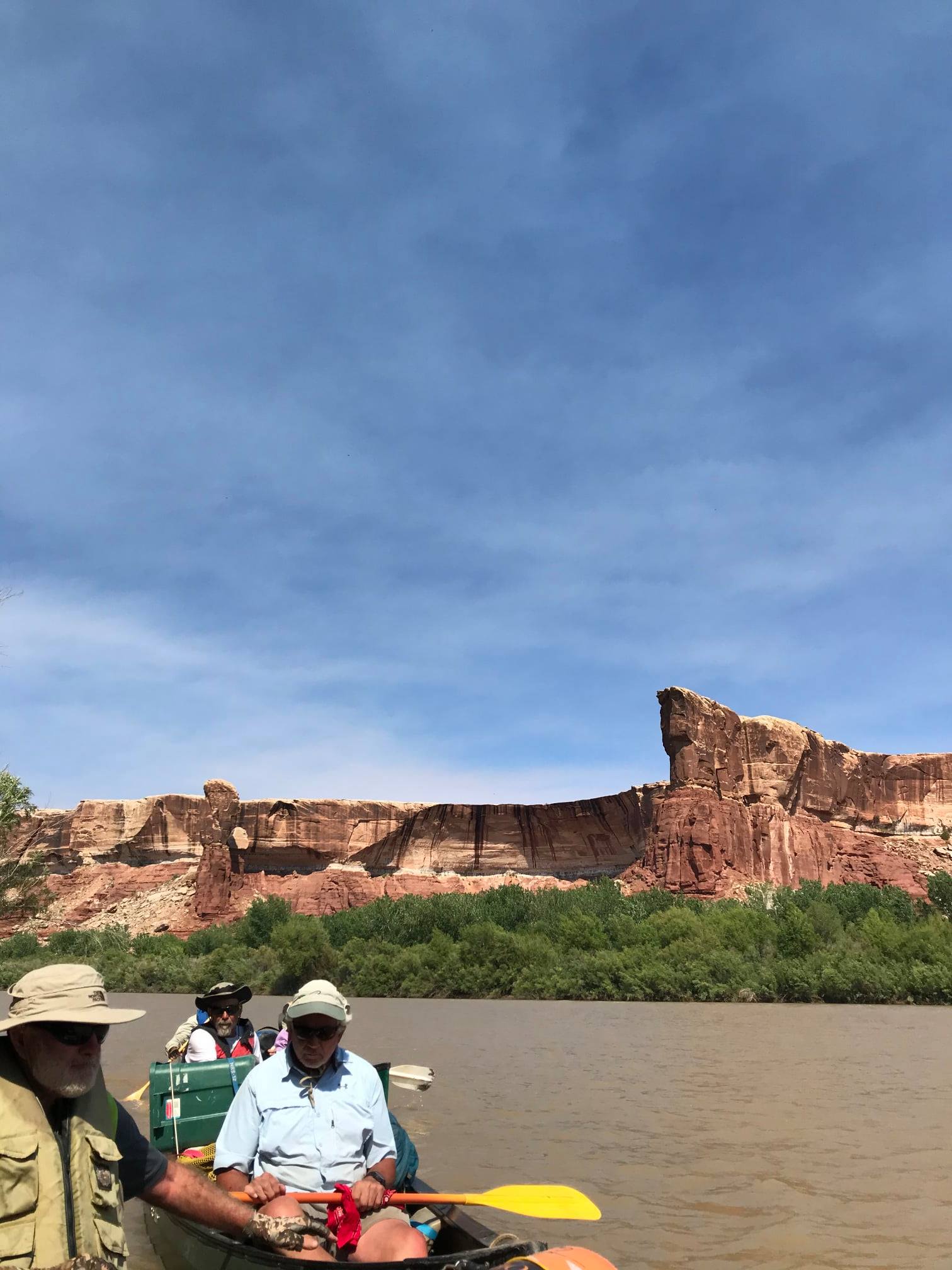
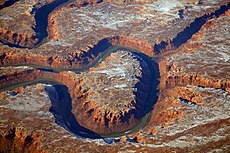

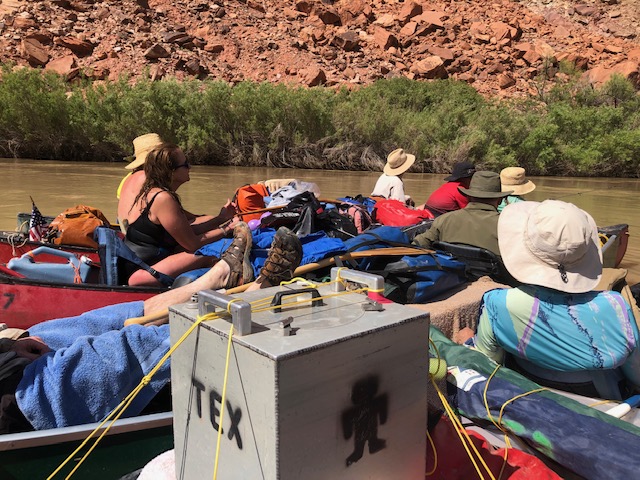


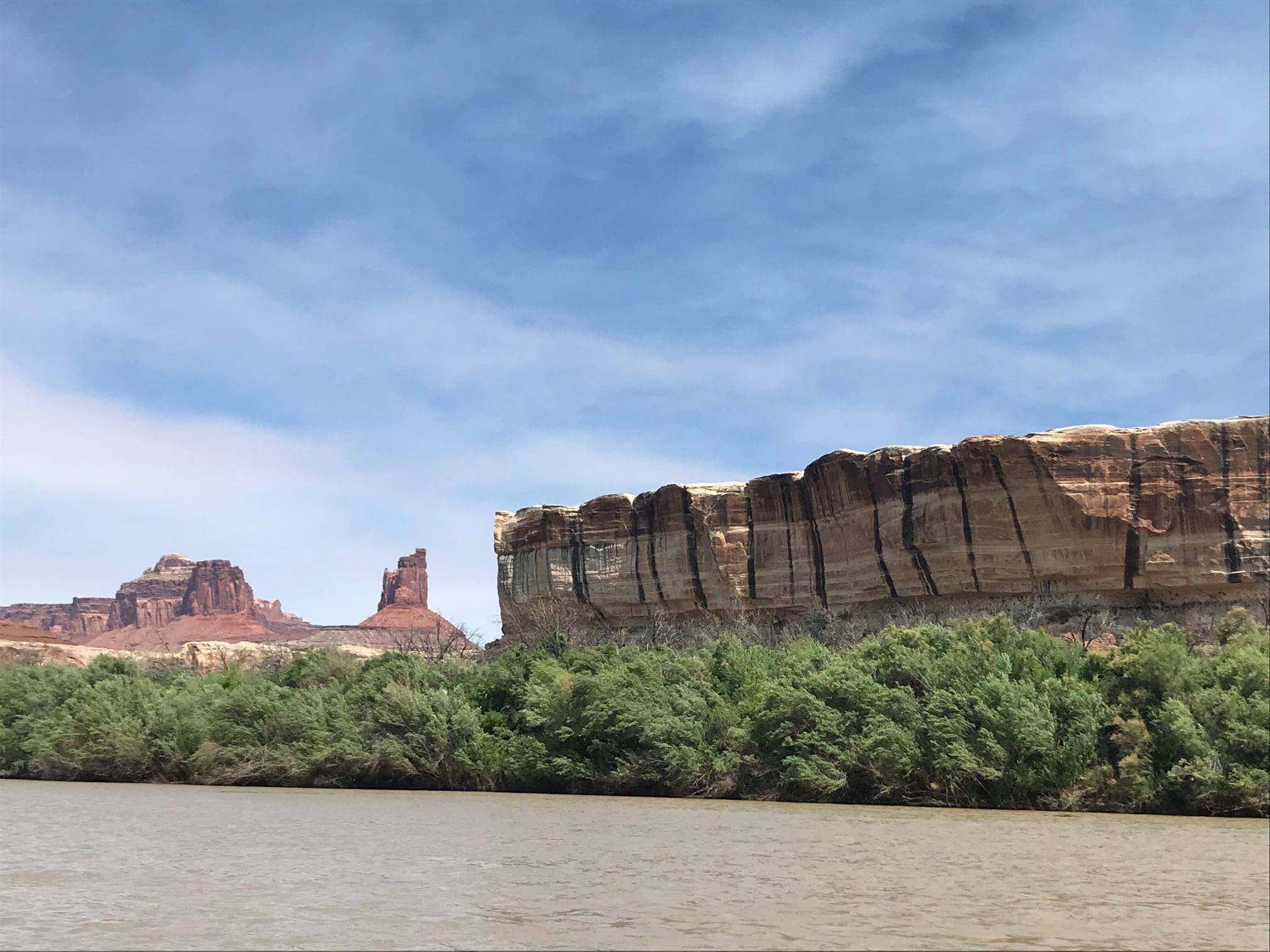
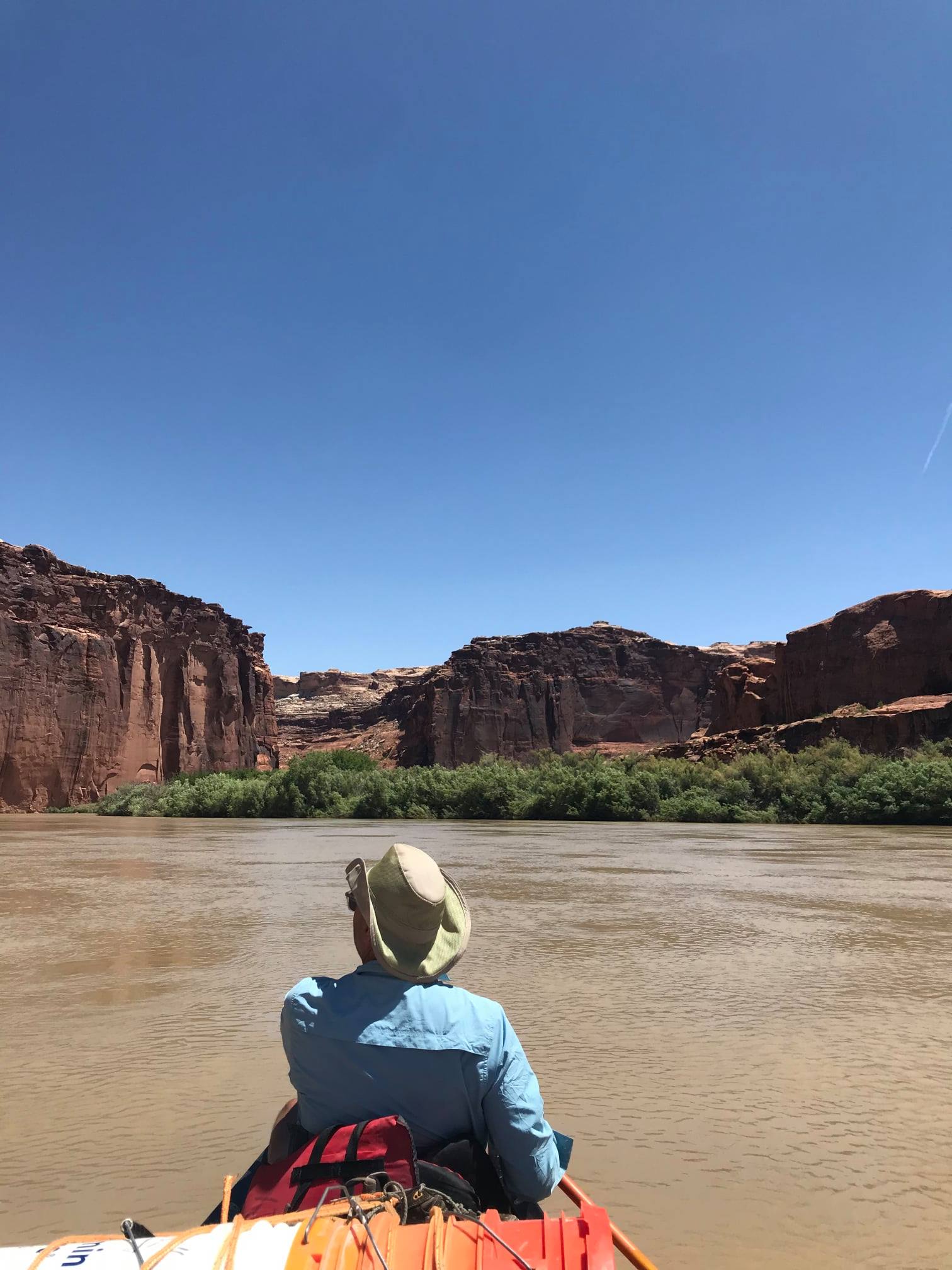
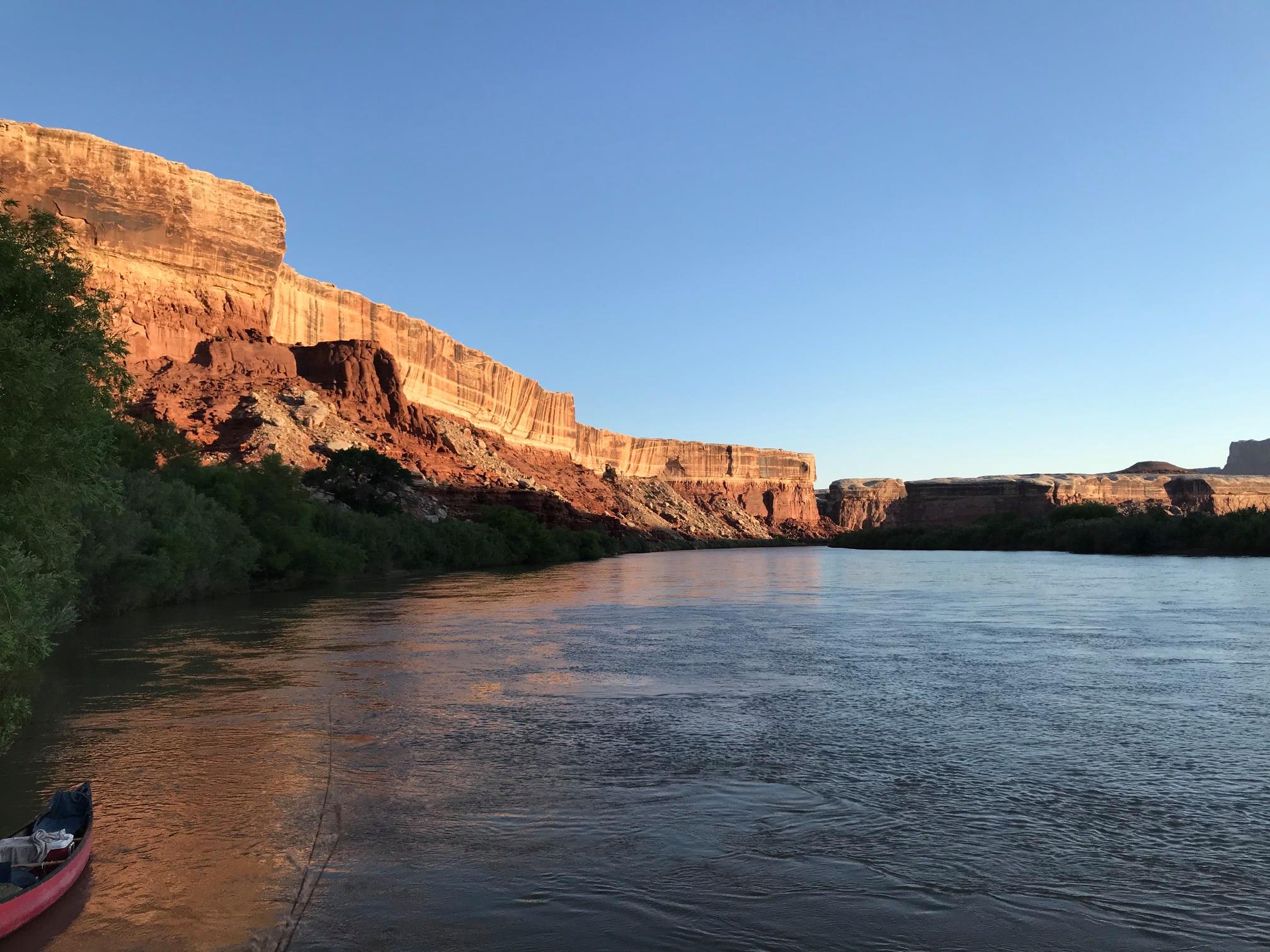
I love reading your account. You are a very good writer.
You did it again Bob!
Great memories and challenges reignited from your detailed and often times humorous account of our journey down the Green! Your writing style is a perfect compliment to our outstanding voyage.
Thanks for recounting and documenting more of our voyage. I’m anxiously awaiting your final installment!
Thanks again for memories!
Paul